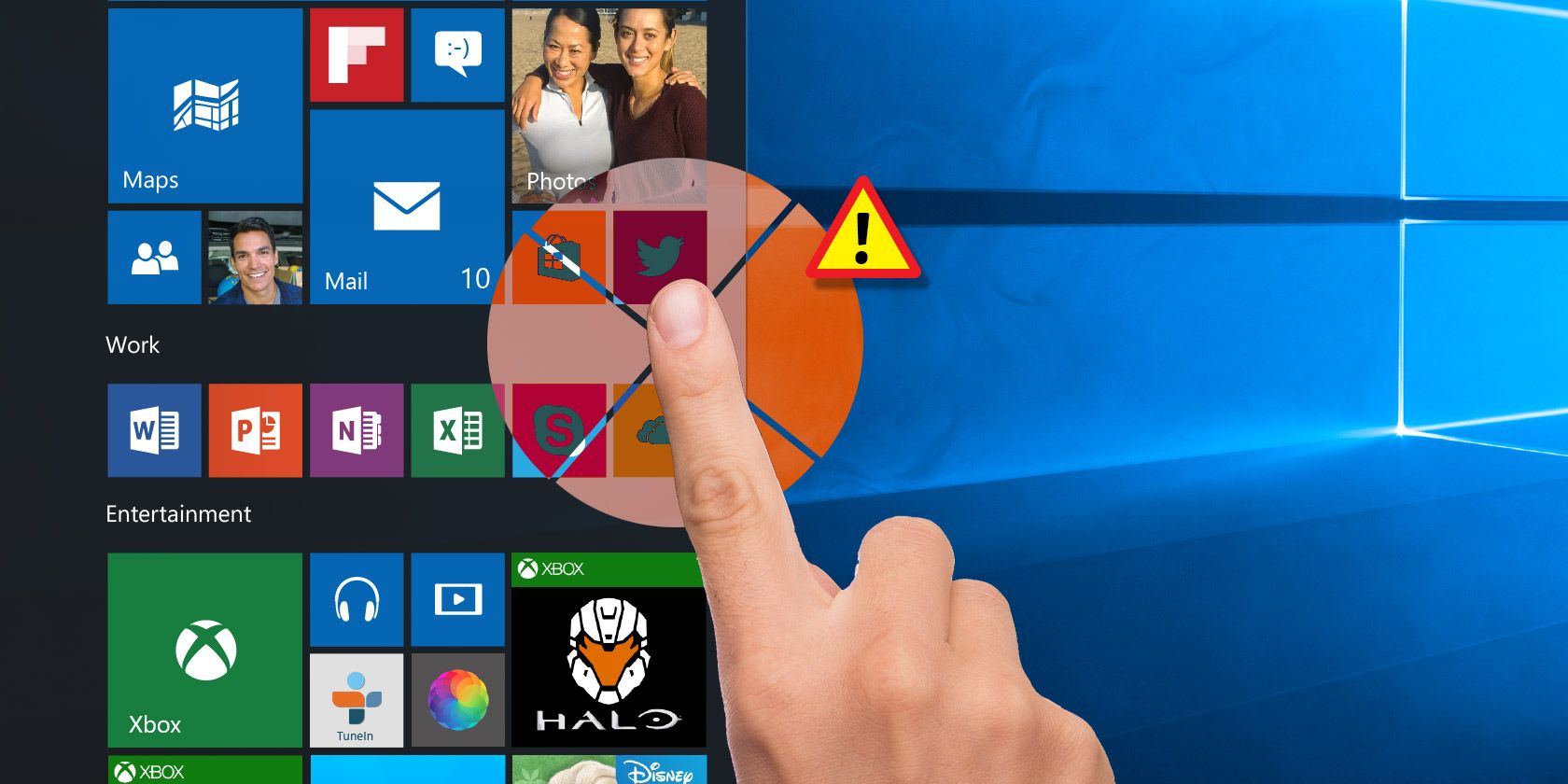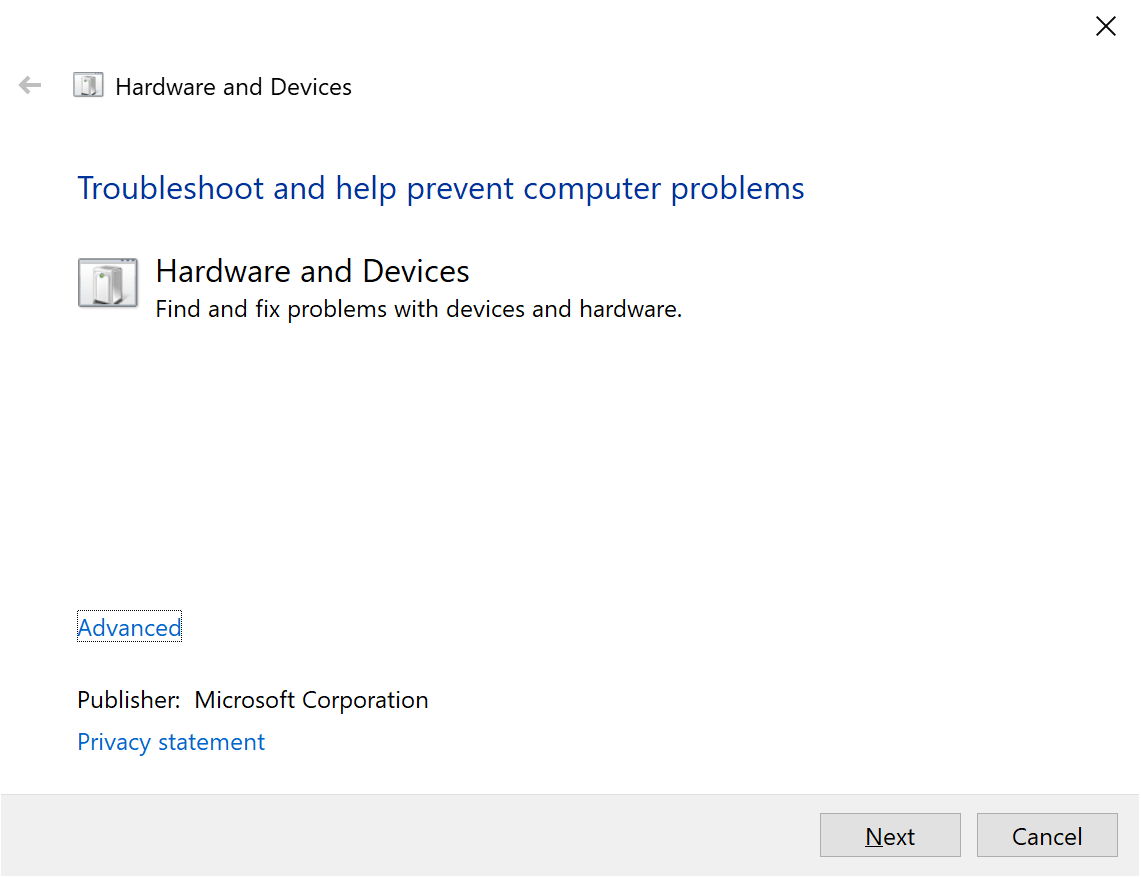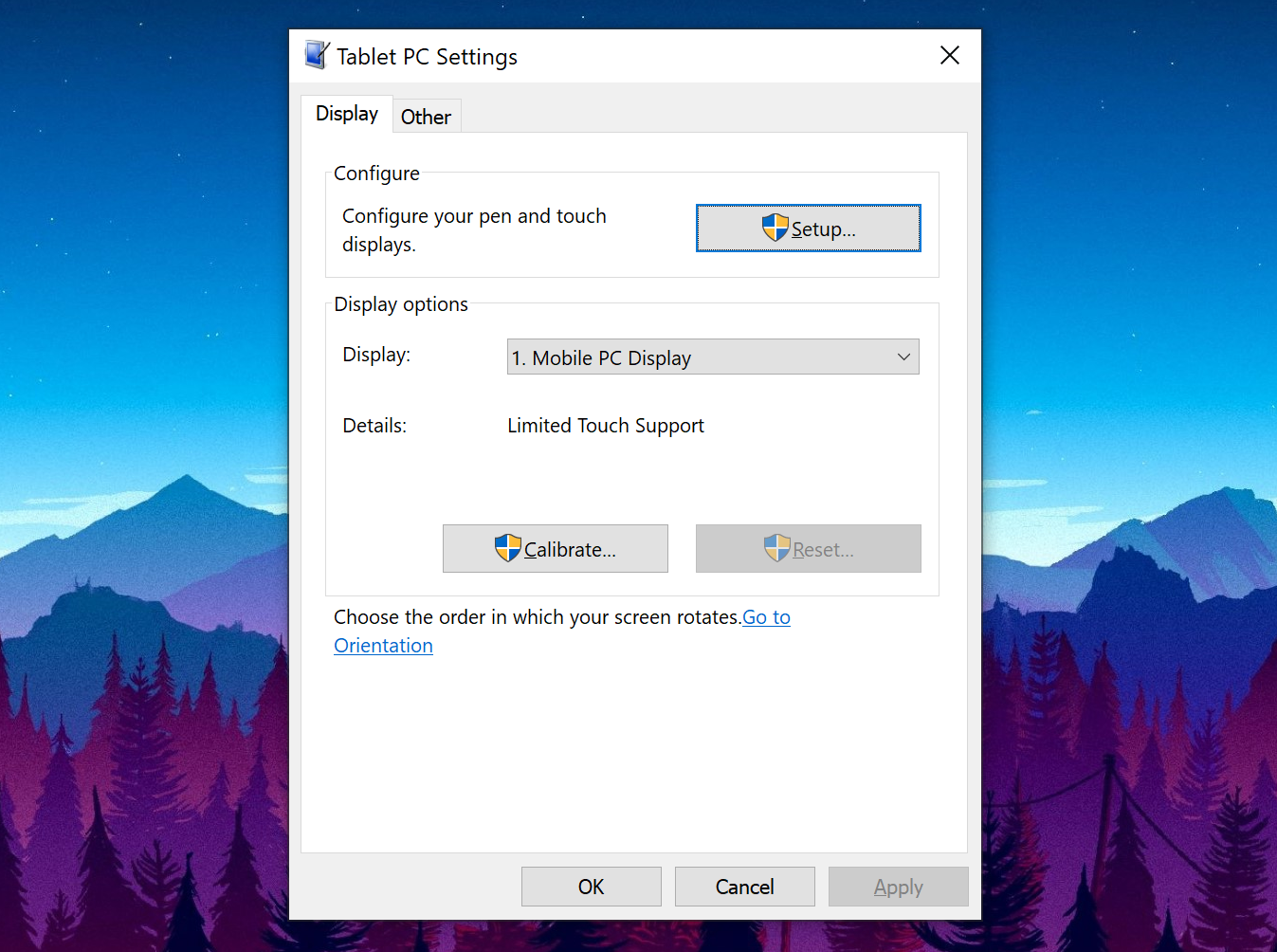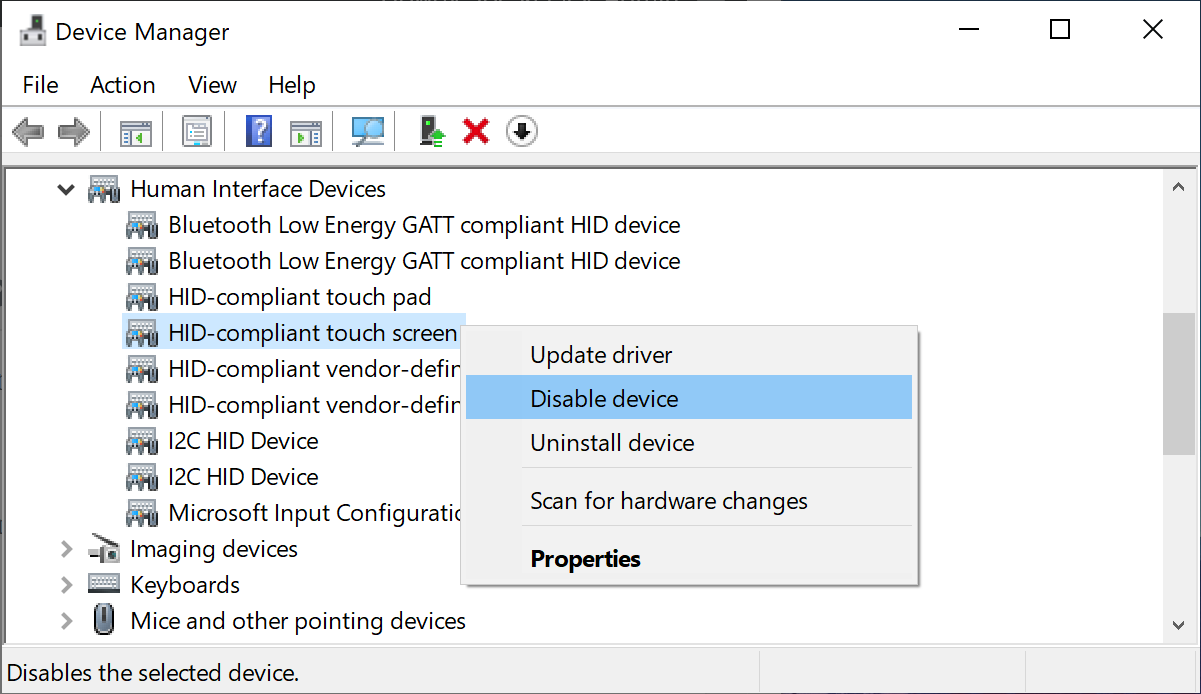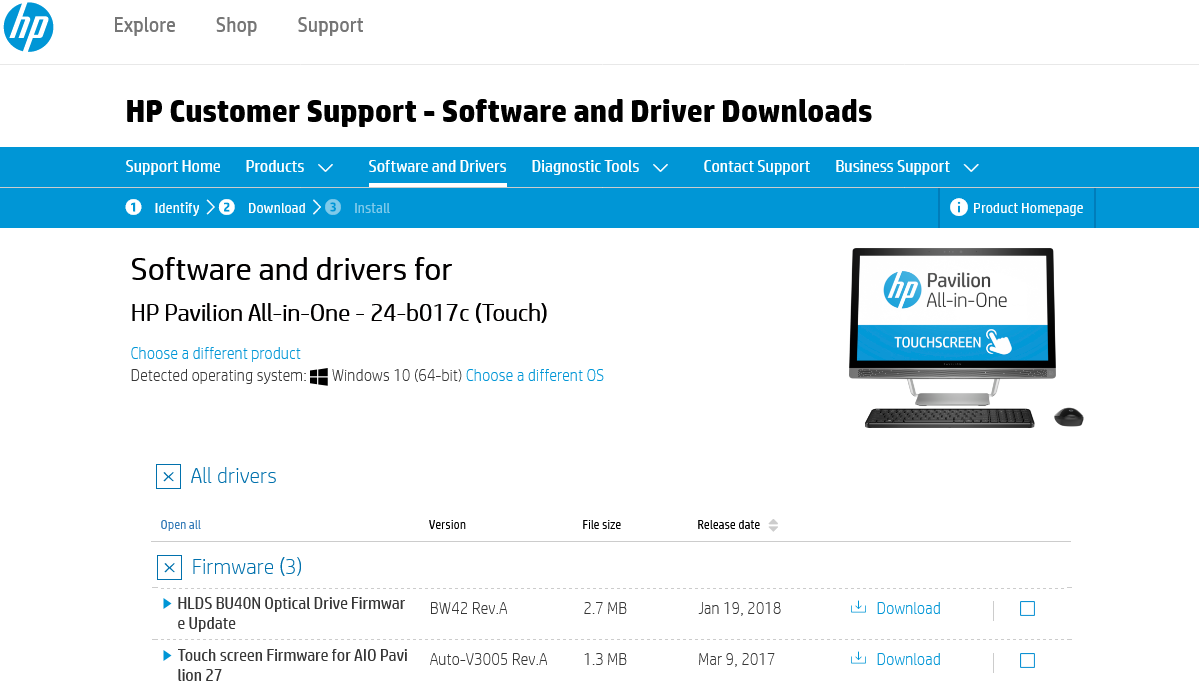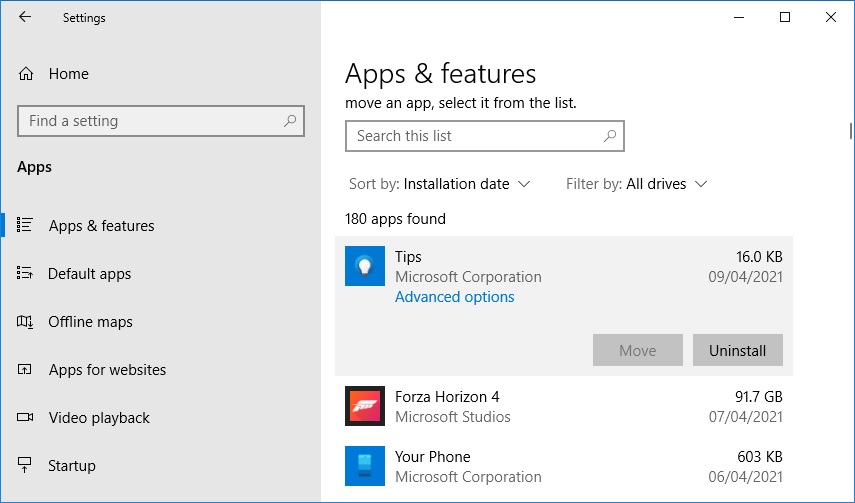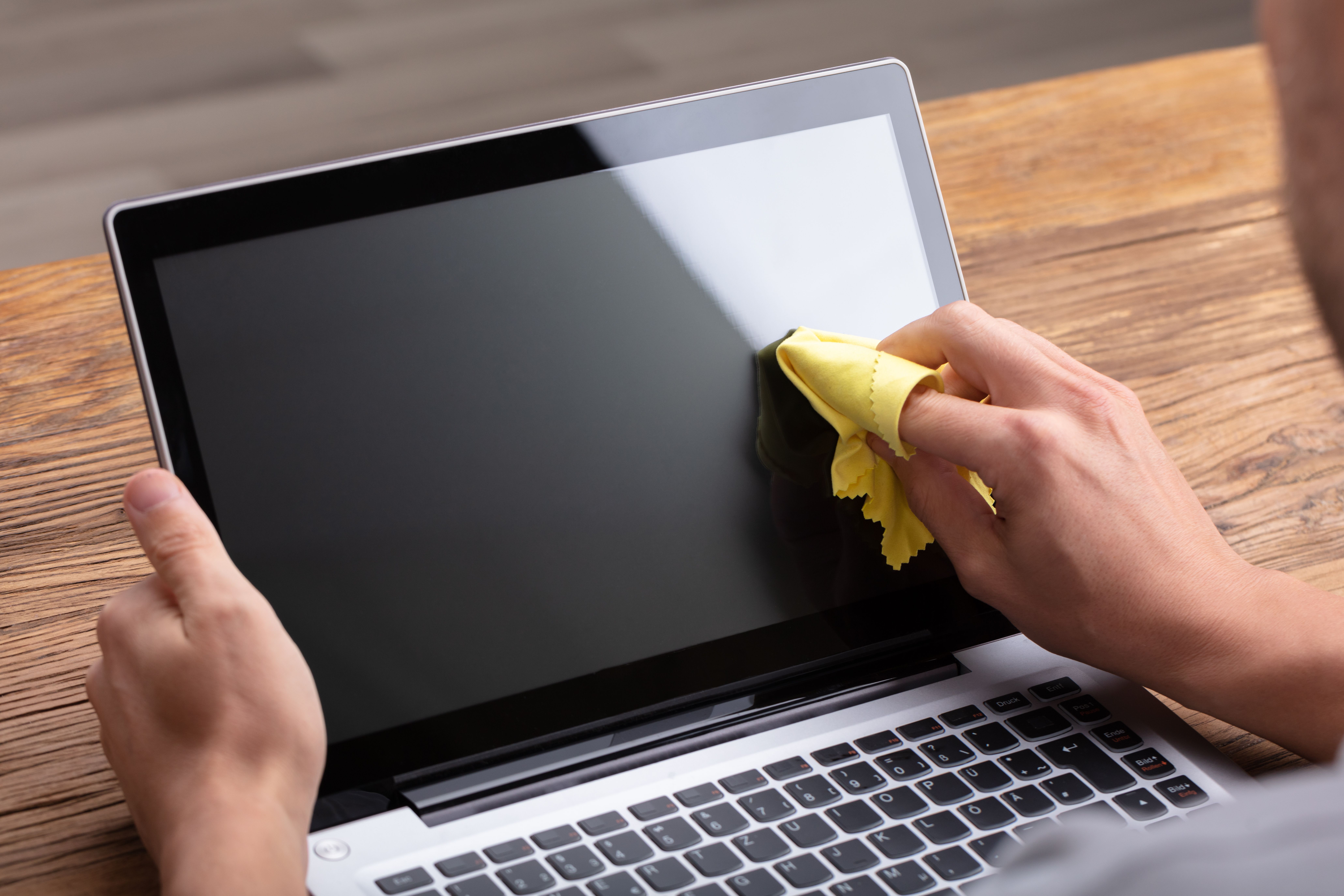Windows 10 is great for touchscreens, especially thanks to the special touch-designed apps for the Windows Ink Workspace. But has your touchscreen stopped working? Sometimes it can break for seemingly no reason, so we're here to show you how to fix your touchscreen in Windows 10.
The majority of the problems are caused by driver incompatibility. This is even more likely if the touchscreen has stopped working after updating Windows 10. We'll cover this, along with many other troubleshooting tips, to get your touchscreen working again.
1. Run the Hardware and Devices Troubleshooter
Windows 10 has a range of troubleshooting tools that can detect problems and apply automatic fixes.
One of these troubleshooters scans your hardware and devices and can be used to fix problems with your touchscreen.
This troubleshooter used to be accessible easily via Settings, but now must be launched through Command Prompt:
- Open the Start menu, search for Command Prompt, and select it.
- Type the following command: msdt.exe -id DeviceDiagnostic
- Press Enter. This will launch the Hardware and Devices troubleshooter.
- Click Next and run the wizard through. The tool will automatically detect issues and then repair them.
Hopefully, this tool finds your touchscreen issue and repairs it. If the Windows troubleshooter couldn't identify the issue, keep on reading.
2. Calibrate the Touchscreen
When your touchscreen is slow to respond or records your touch gestures inaccurately, a re-calibration might be all it takes to bring it up to speed. Here's how to perform a touchscreen calibration.
- Open the Start menu, search for calibrate, and select Calibrate the screen for pen or touch input. A window will open that contains tablet PC settings.
- On the Display tab, click Setup and follow the instructions.
- Once done, click Calibrate and follow the instructions.
3. Disable and Re-enable the Touchscreen
We assume you've already tried to restart your computer—it's the de facto fix for many tech issues. If not, go ahead and do that now.
If that hasn't resolved anything, the next step is to turn the touchscreen off and on.
- Press Windows key + X and click Device Manager.
- Double-click on Human Interface Devices to expand the category.
- Right-click the HID-compliant touch screen and select Disable device.
- You'll be asked to confirm this, so click Yes.
- Right-click the listing again, but this time select Enable device.
4. Change Power Management Settings
Windows 10 will do its best to conserve power and extend your laptop battery's life, but sometimes the settings can be overzealous and turn off your touchscreen after a period of activity.
While the touchscreen should automatically enable itself again when it detects an input, this isn't always the case. As such, you can disable the power saving of your touchscreen to see if this fixes the problem.
- Press Windows key + X and click Device Manager.
- Double click on Human Interface Devices to expand the category.
- Double click the HID-compliant touch screen.
- Switch to the Power Management tab.
- Uncheck Allow the computer to turn off this device to save power.
- Click OK, then restart your system.
5. Update the Touchscreen Drivers
Your touchscreen malfunction could be due to a faulty driver. Perhaps the driver has corrupted or needs updating.
Previously, you could use Device Manager to search online for updated drivers. However, in August 2020, Microsoft removed the automatic driver update from Windows 10.
This means you will need to go to your system manufacturer's website (like HP, Dell, or Acer) and download the driver directly from them. You'll likely find it in their support section.
Once you have the driver downloaded:
- Press Windows key + X and click Device Manager.
- Double-click on Human Interface Devices to expand the category.
- Right-click the HID-compliant touch screen.
- Click Update driver.
- Select Search automatically for drivers. Windows should find the driver you downloaded and install it. If not, return to this screen and click Browse my computer for drivers to locate it manually.
- Restart and see if your problem is resolved.
6. Rollback the Touchscreen Drivers
It isn't always necessary to update your drivers if everything is working well. If you recently updated your touchscreen driver, you should try rolling back to a previous version.
- Press Windows key + X and click Device Manager.
- Double-click on Human Interface Devices to expand the category.
- Right-click the HID-compliant touch screen.
- Click Properties.
- Switch to the Driver tab.
- Click Roll Back Driver.
Alternatively, do you know that there's a specific older driver version that will work but cannot get to it through a rollback? If so, within the Driver tab, select Uninstall instead and then follow the method in the previous above to update your drivers.
7. Uninstall Recent Programs
For whatever reason, some programs cause touchscreen problems. If your touchscreen has only recently broken, you should uninstall any recently added programs.
- Press Windows key + I to open Settings.
- Click Apps.
- Use the Sort by dropdown and select Installation date.
- Look for the date when the touchscreen problem started. Working up, click each app in turn, and Uninstall it.
- Restart your computer each time and see if it fixes the touchscreen.
8. Move to Another Room
This one sounds weird, but give it a shot. Other nearby electronic devices can interfere with the touchscreen. It could be caused by something you've got plugged into the same power bank or because you've got lots of computers in proximity.
It's simple to diagnose this. Take your touchscreen device somewhere else and try it. If it works, electromagnetic interference is the culprit.
To resolve, go back to the original room and turn off everything else. Then turn them back on one by one to see what causes the problem. If none of them seems to be at fault, check nearby areas for powerful equipment that could be the cause.
9. Clean the Touchscreen
Over time, your touchscreen is bound to get grubby with dust, fingerprints, and dirt. This can cause the touchscreen to misbehave or not detect input. As such, you must regularly clean your computer screen.
To clean it, first turn off your system. Next, grab a microfiber cloth and rub the screen in small circular motions. For any stubborn marks, very gently dampen part of the cloth with water; for your device's safety, use as little water as possible.
10. Contact the Manufacturer
Have you tried all of these tips, yet your touchscreen is still broken? If so, you should contact your system manufacturer to get them to investigate.
The problem is likely a hardware fault rather than a system one, and they will have the expertise to fix it. You may find that you're still covered by warranty, depending on what caused the damage.
You can quickly establish if it's a hardware fault by booting into UEFI. If you have a Surface device, power it down, then press and hold the volume up and power button until a Microsoft/Surface logo appears. If the touchscreen doesn't work in UEFI, it's very likely a hardware fault for your manufacturer to resolve.
Use Touch Gestures for Speedy Navigation
Hopefully our advice above has resolved any problems that you were having with your Windows 10 touchscreen.
Now it's time to happily use your touchscreen again. If you haven't tried them already, give Windows' touch gestures a try—you can zoom, enter Task View, open the Action Center, and so much more.

